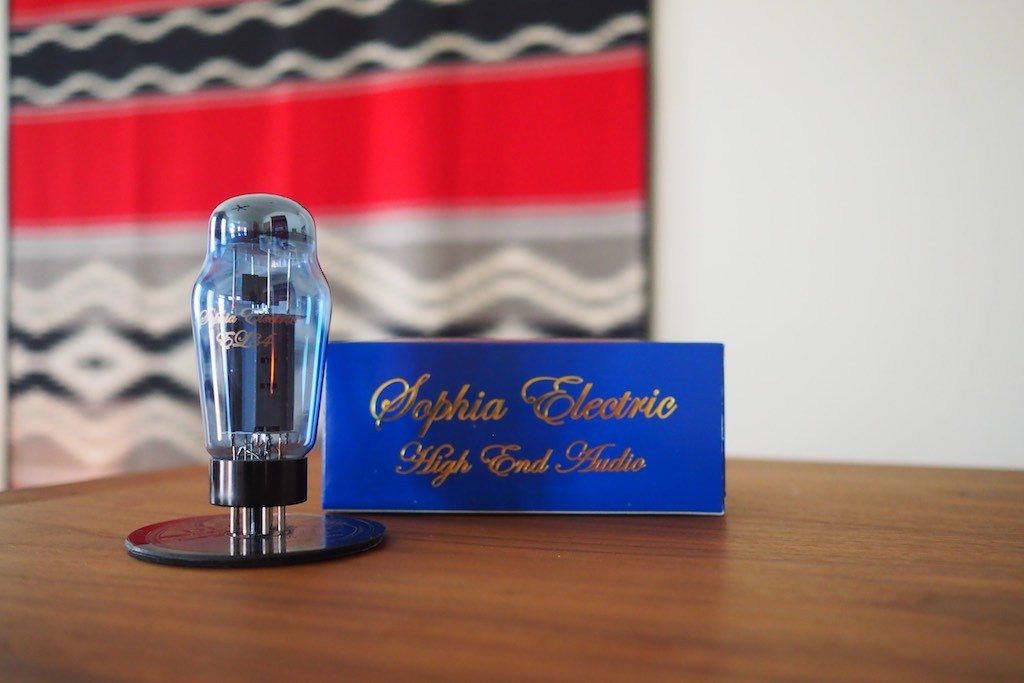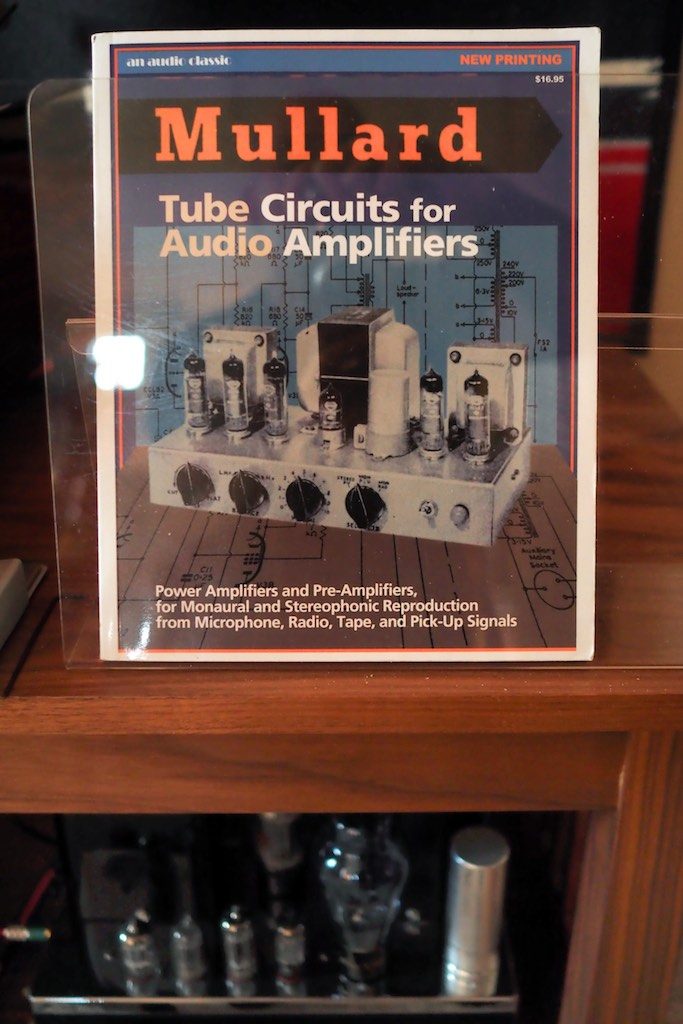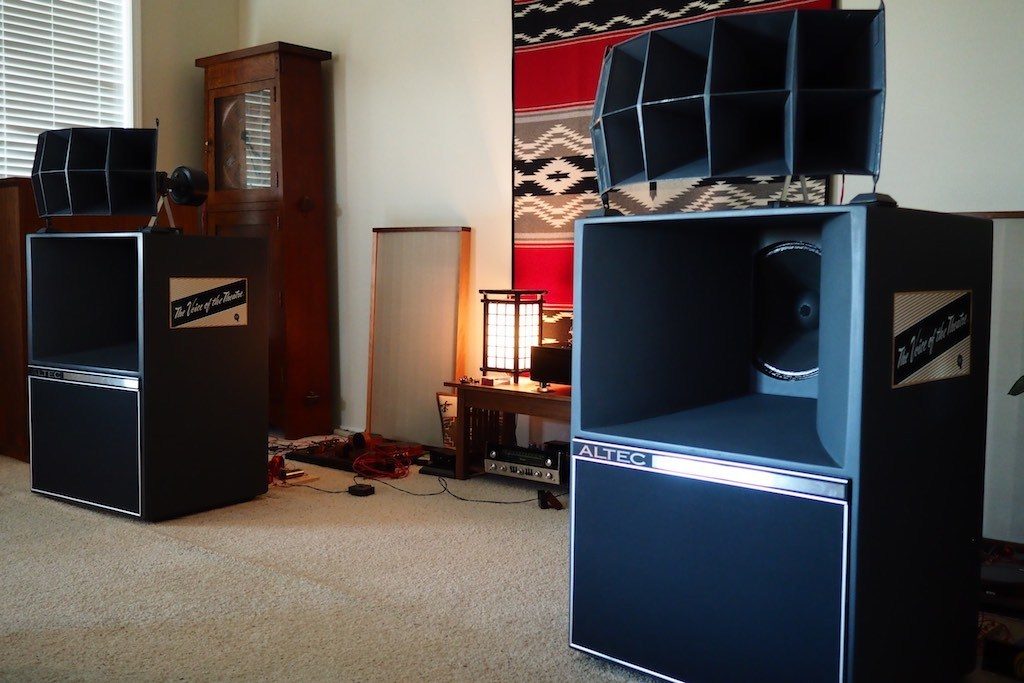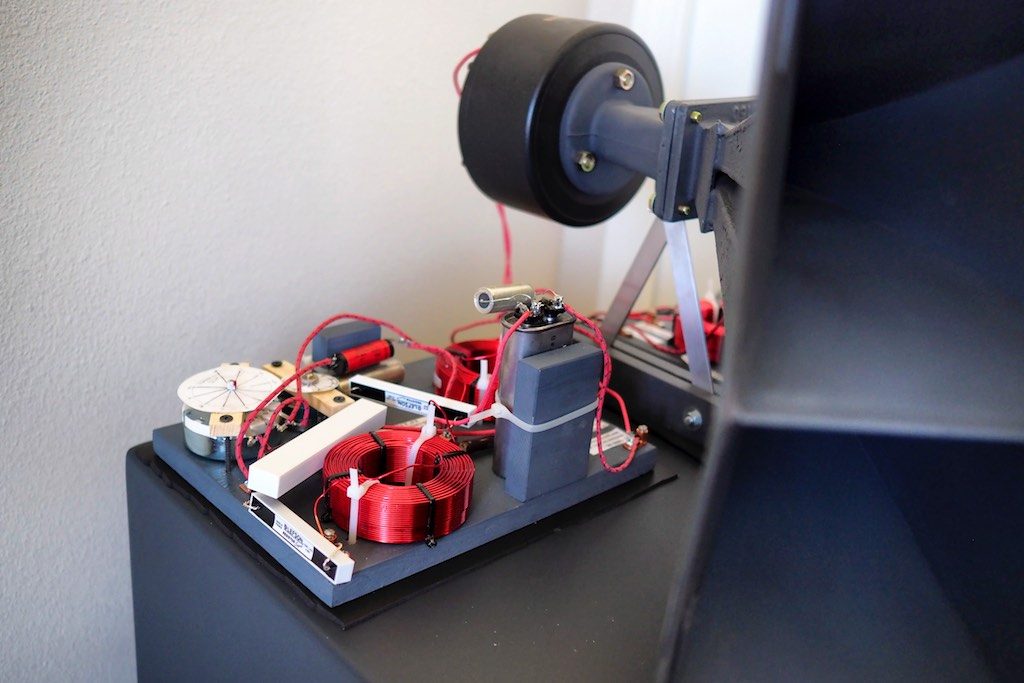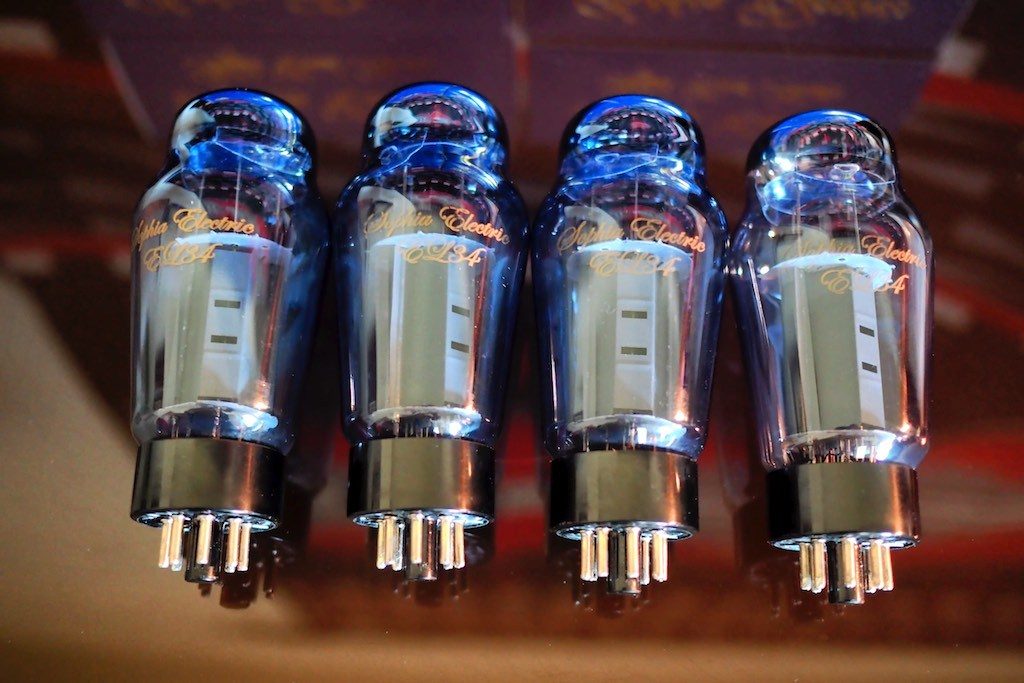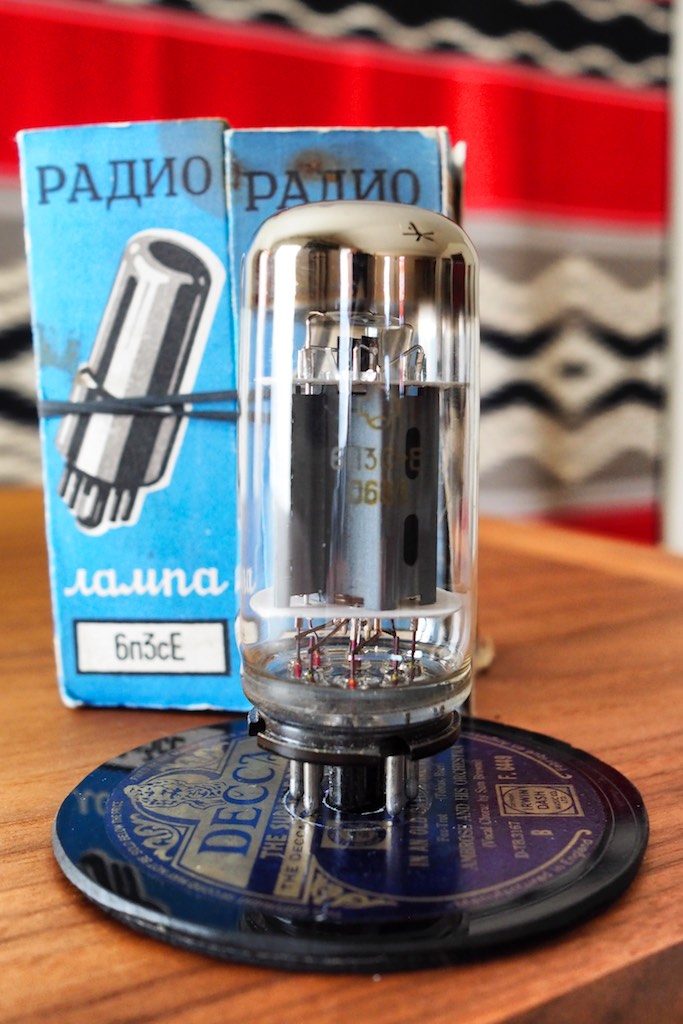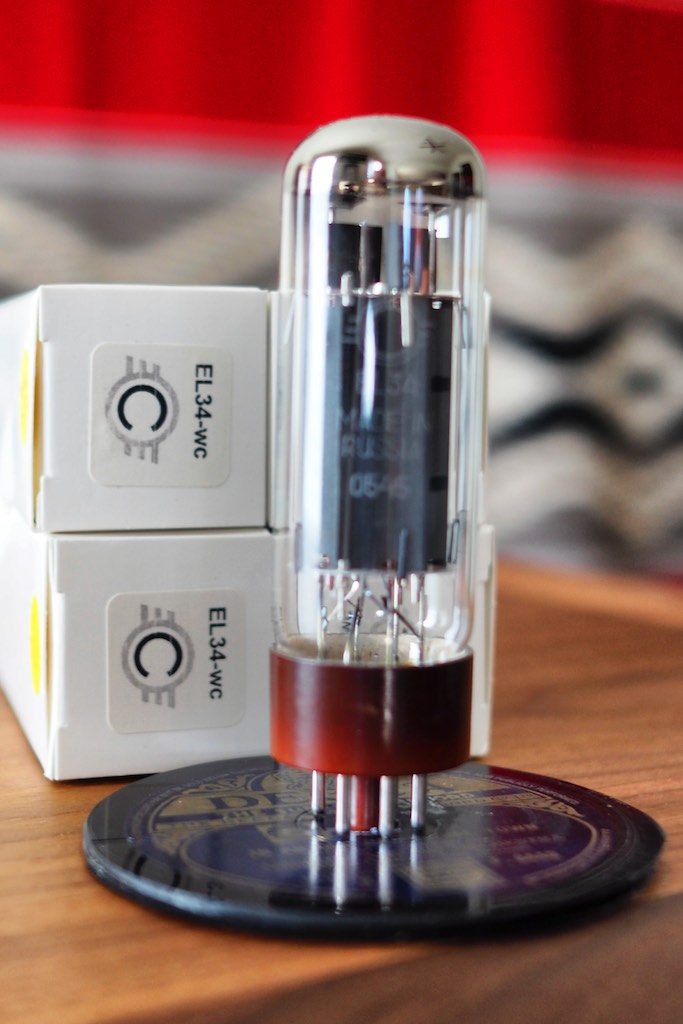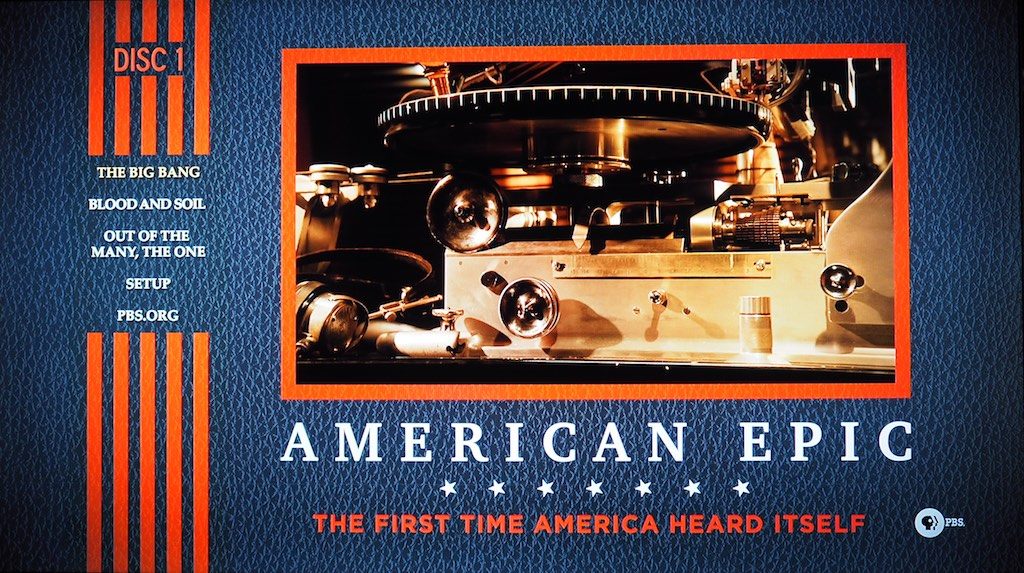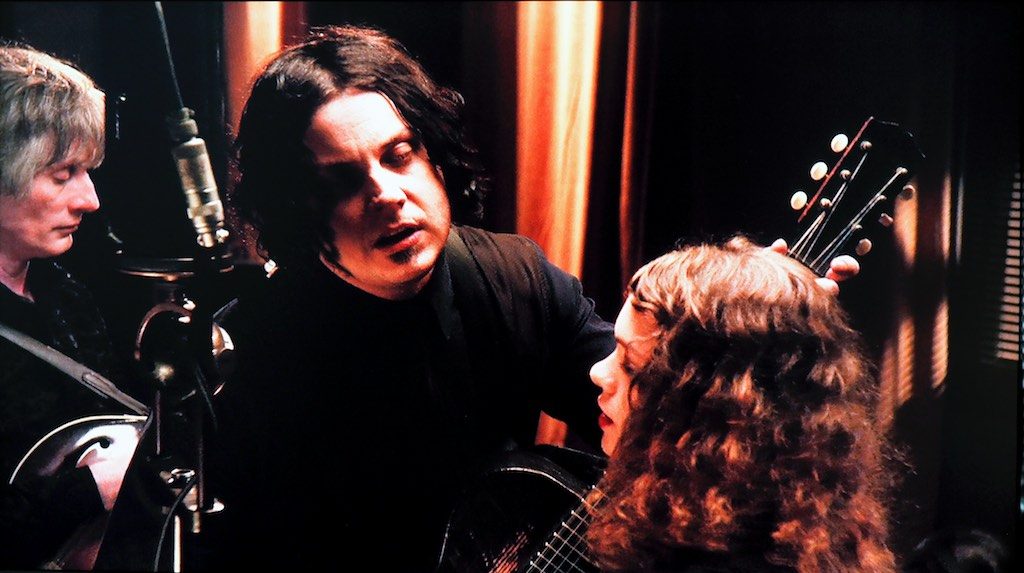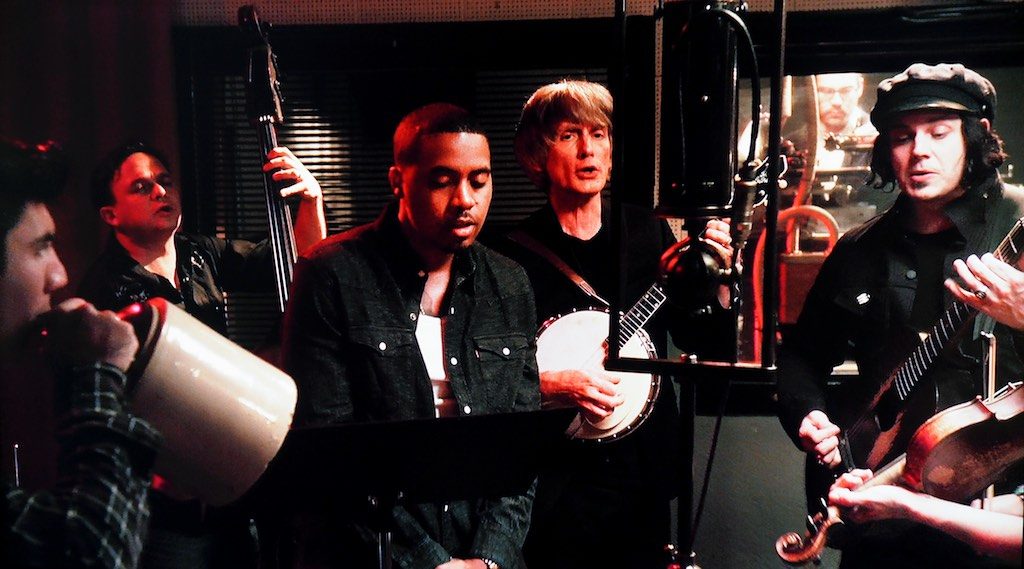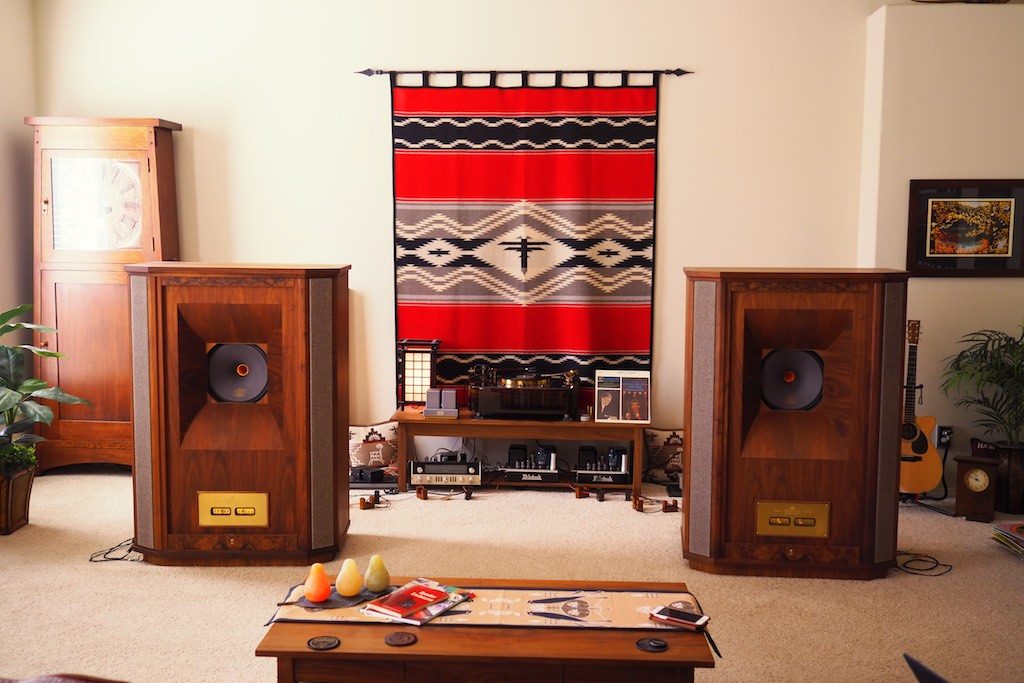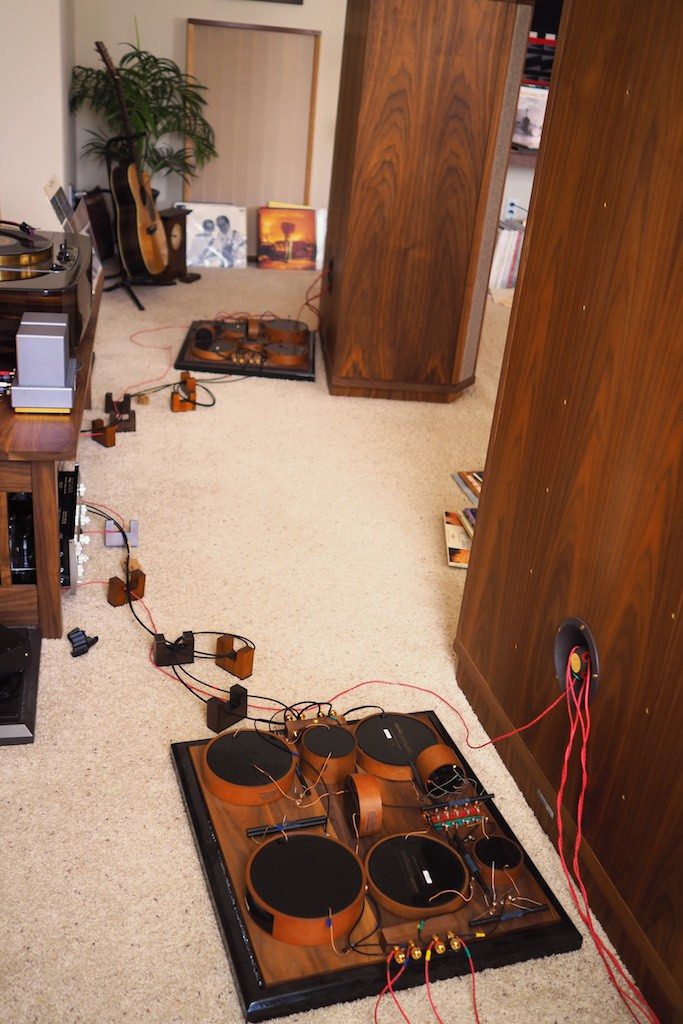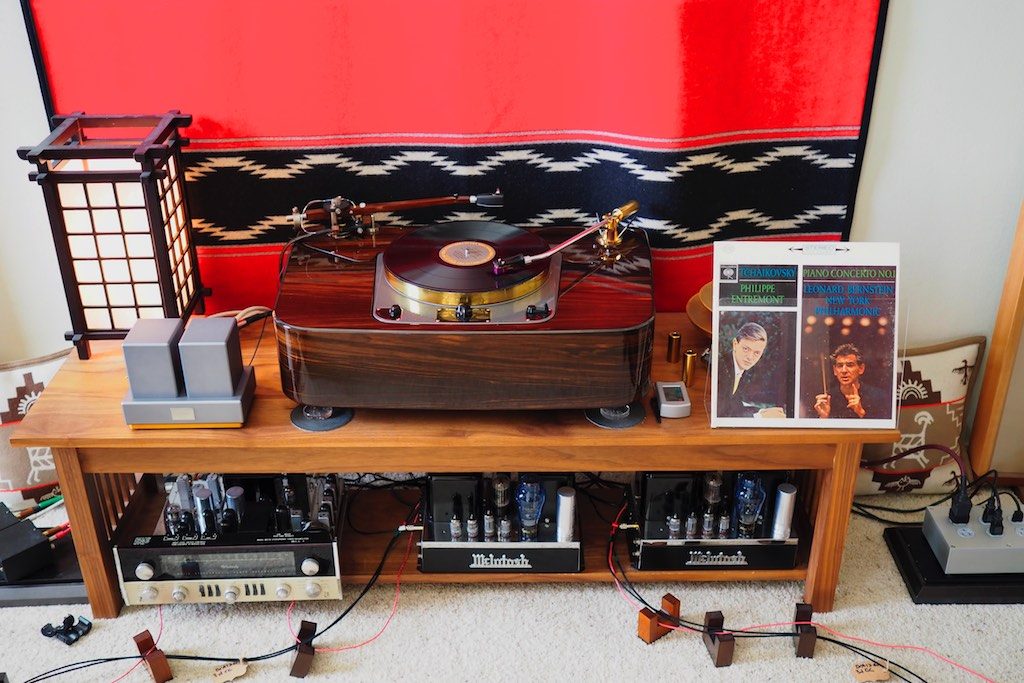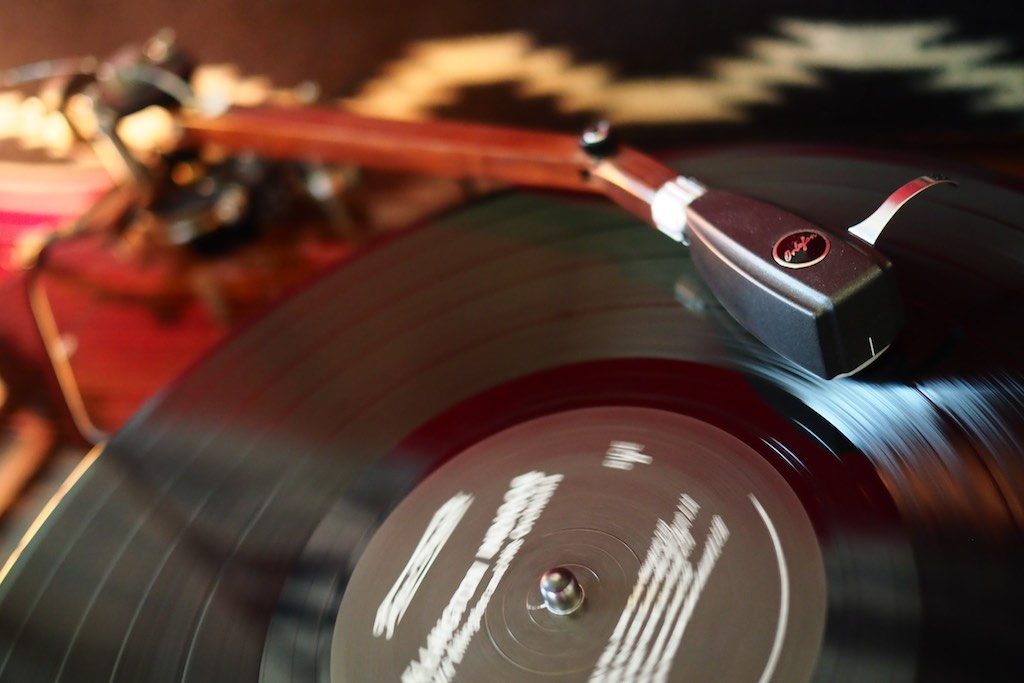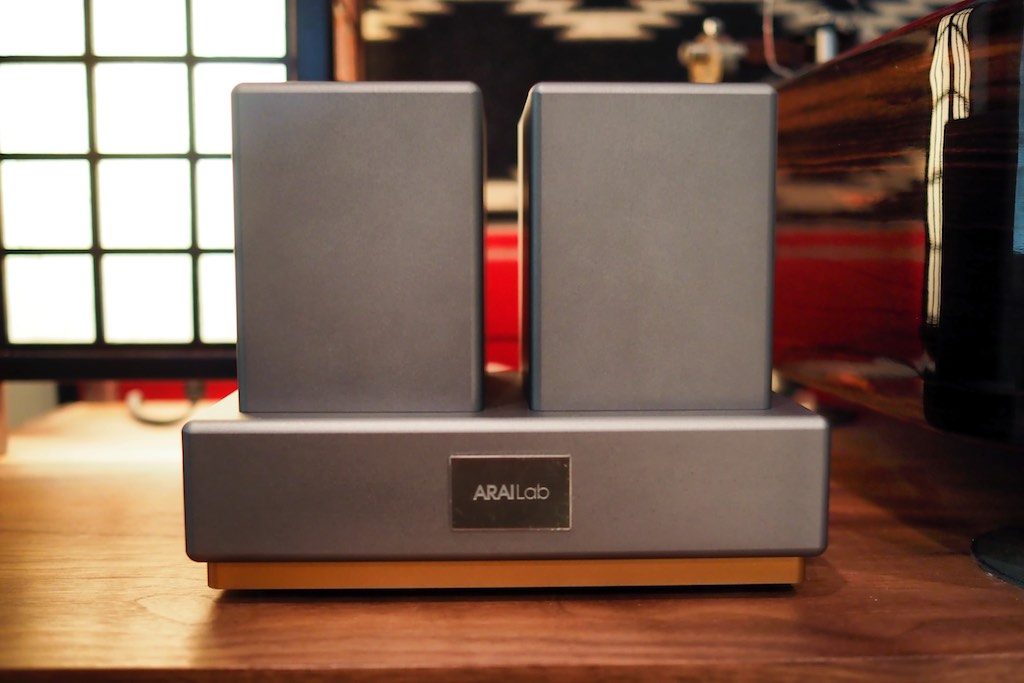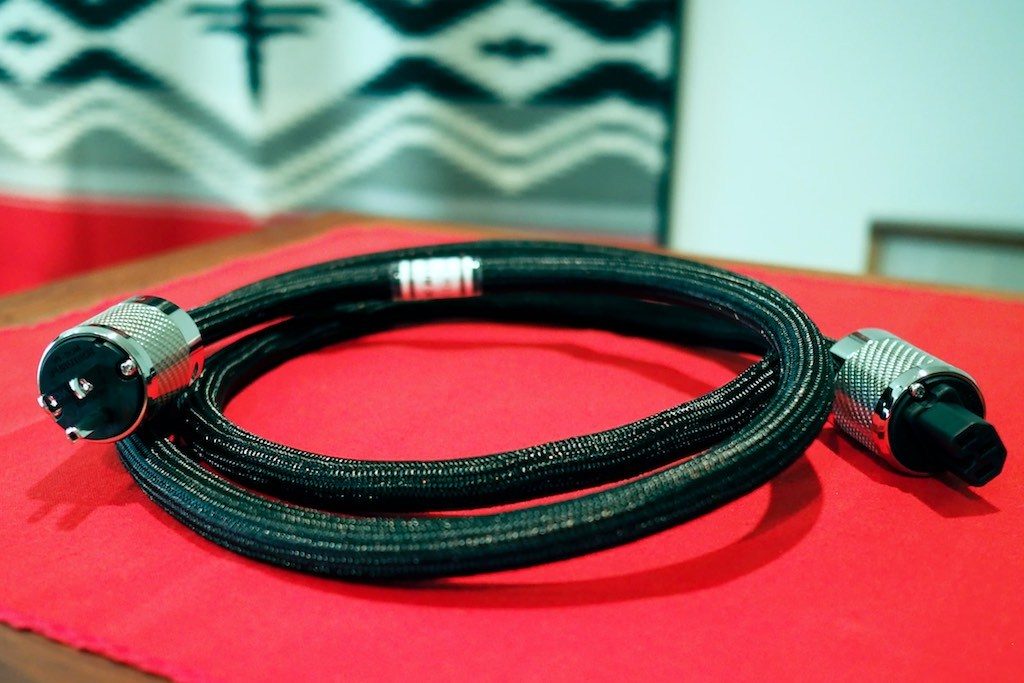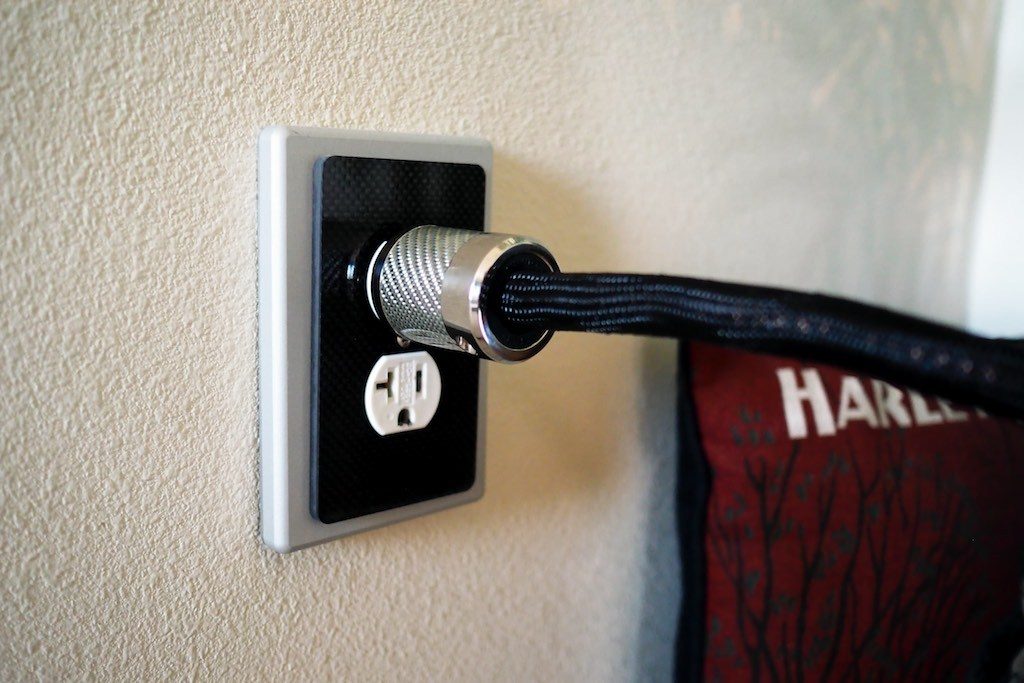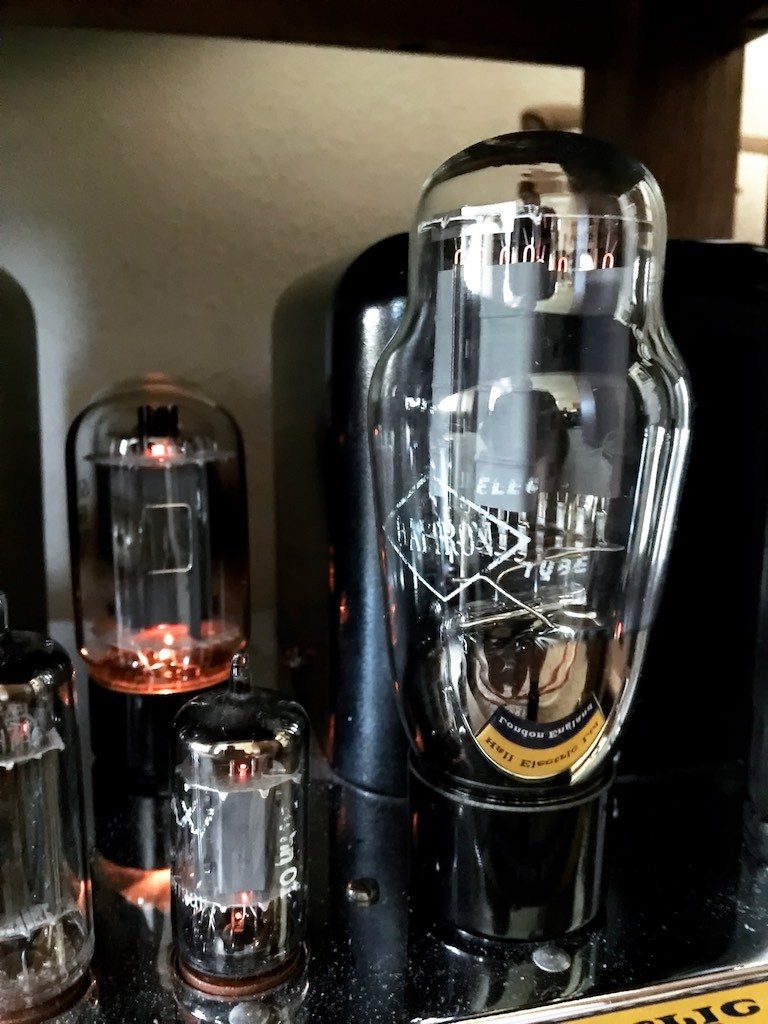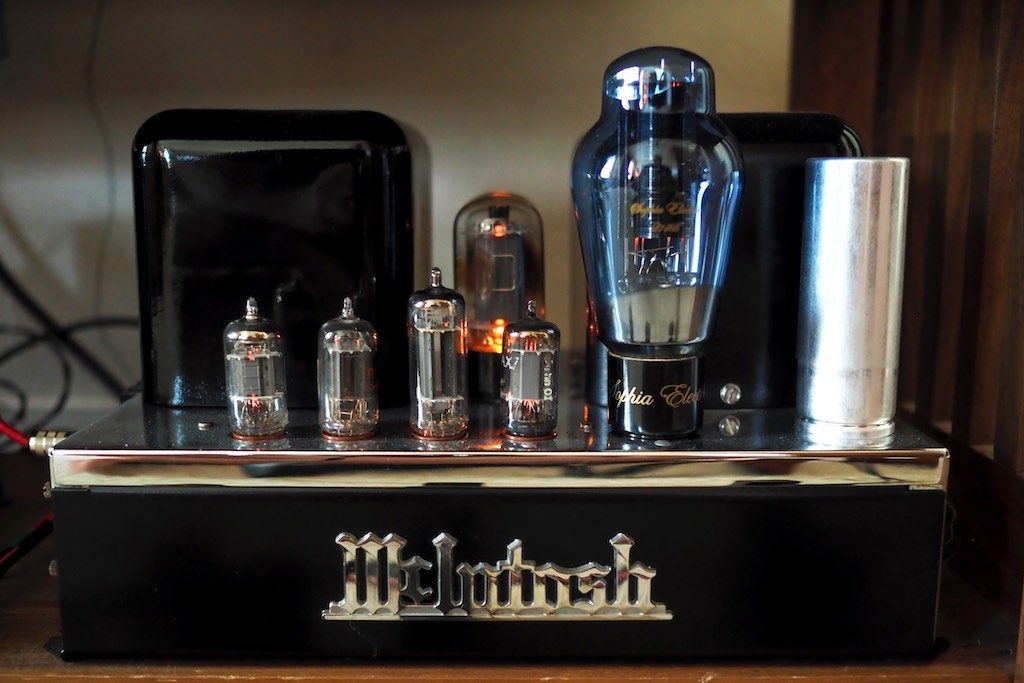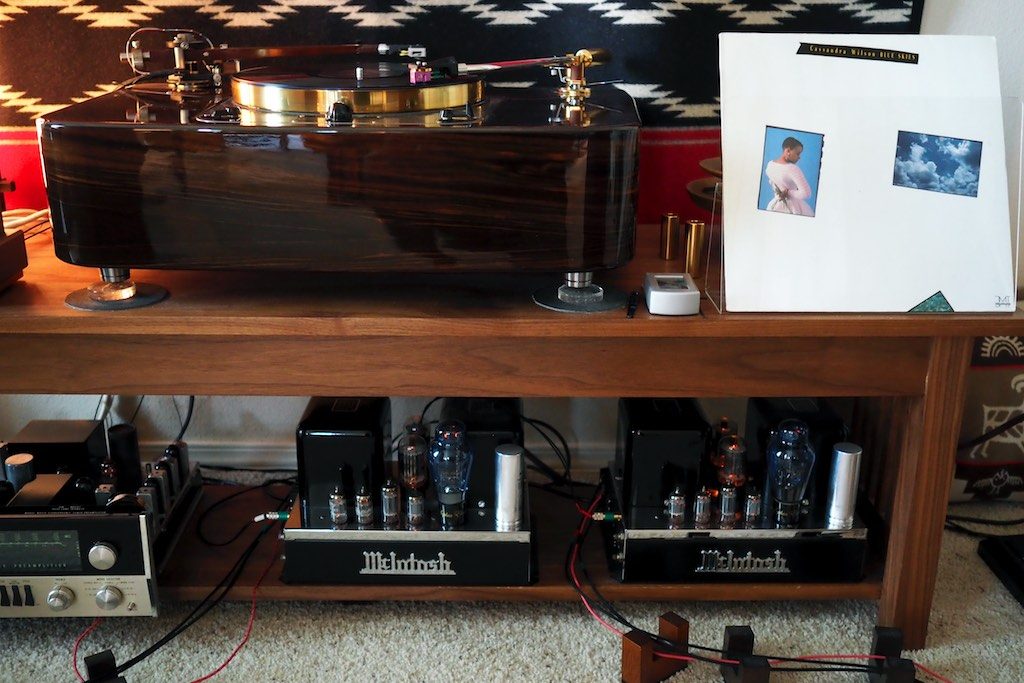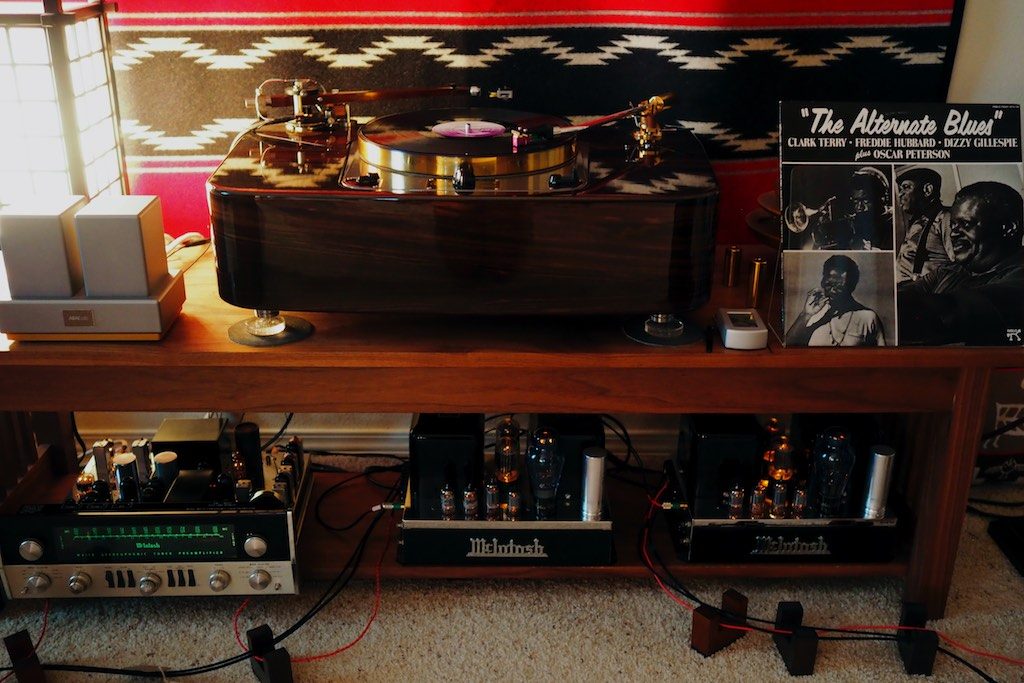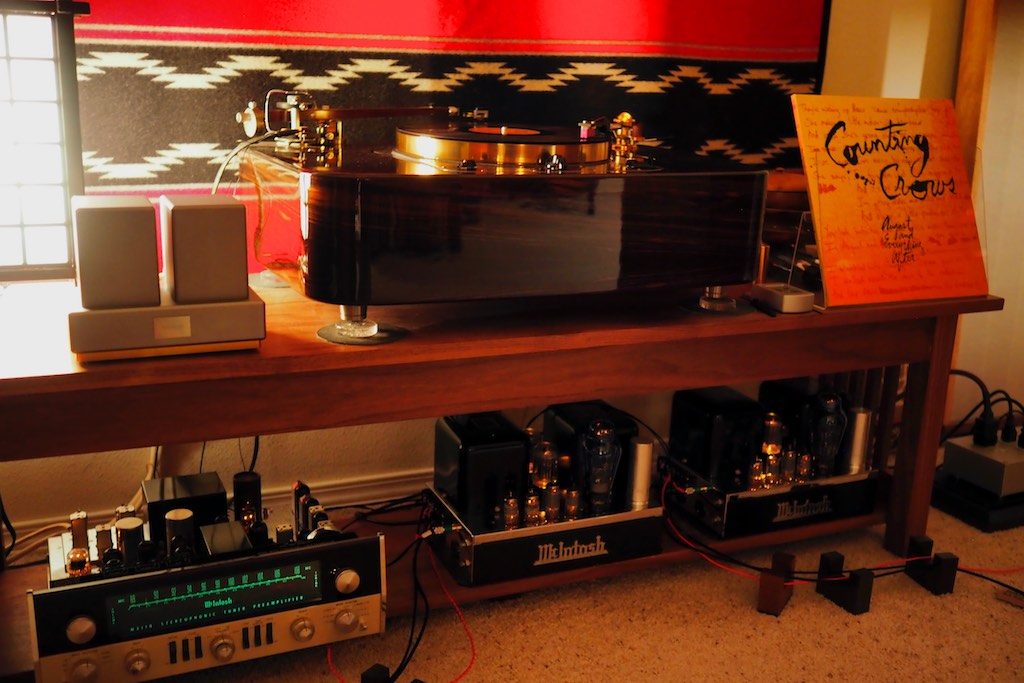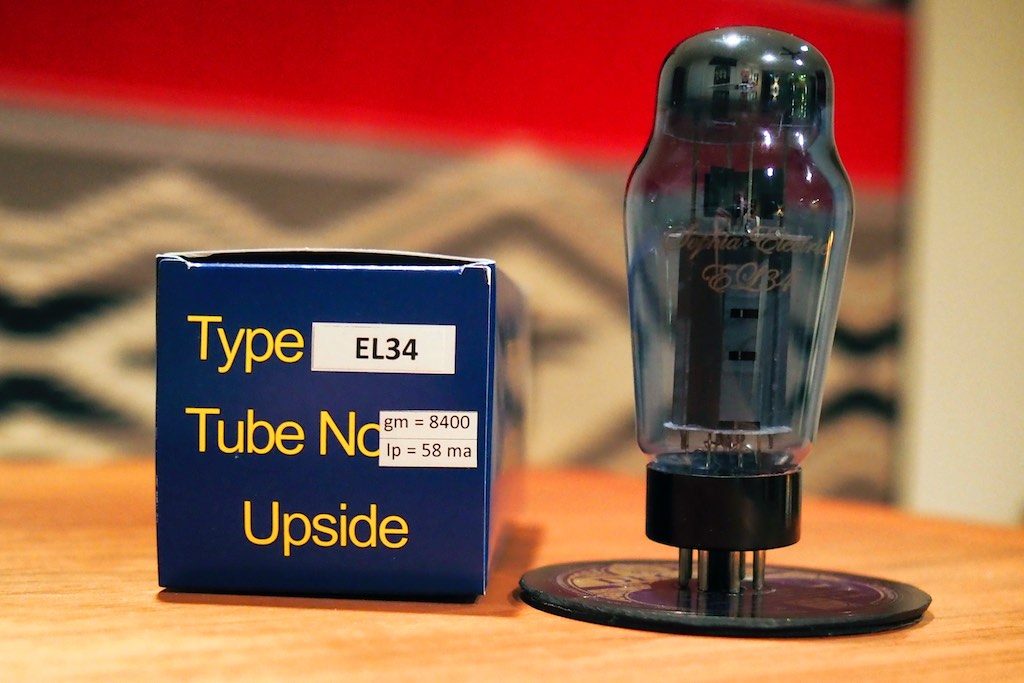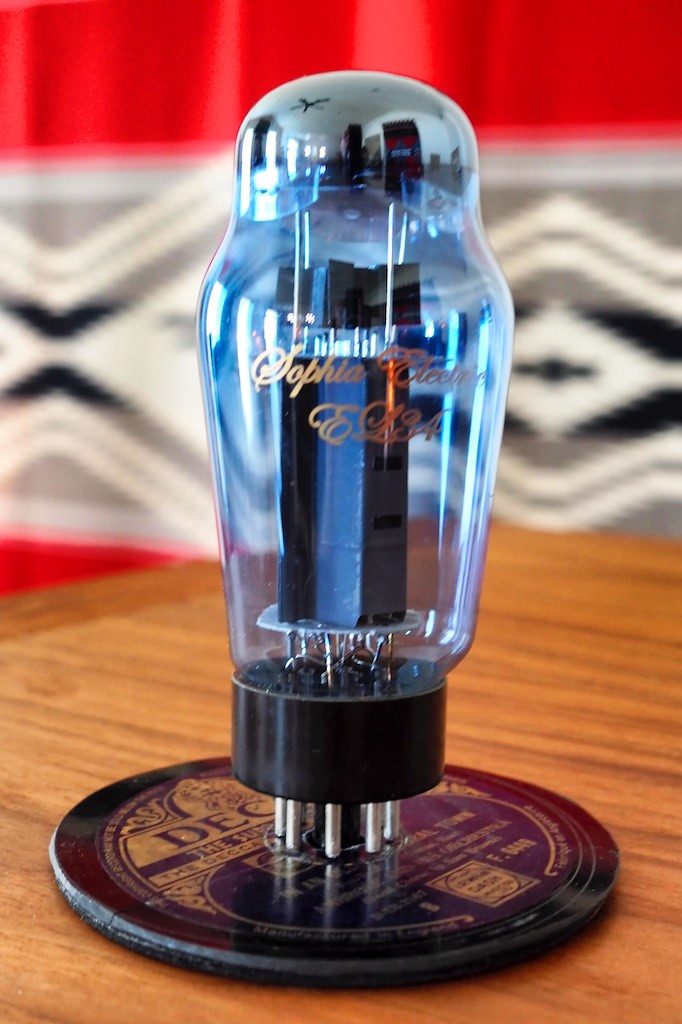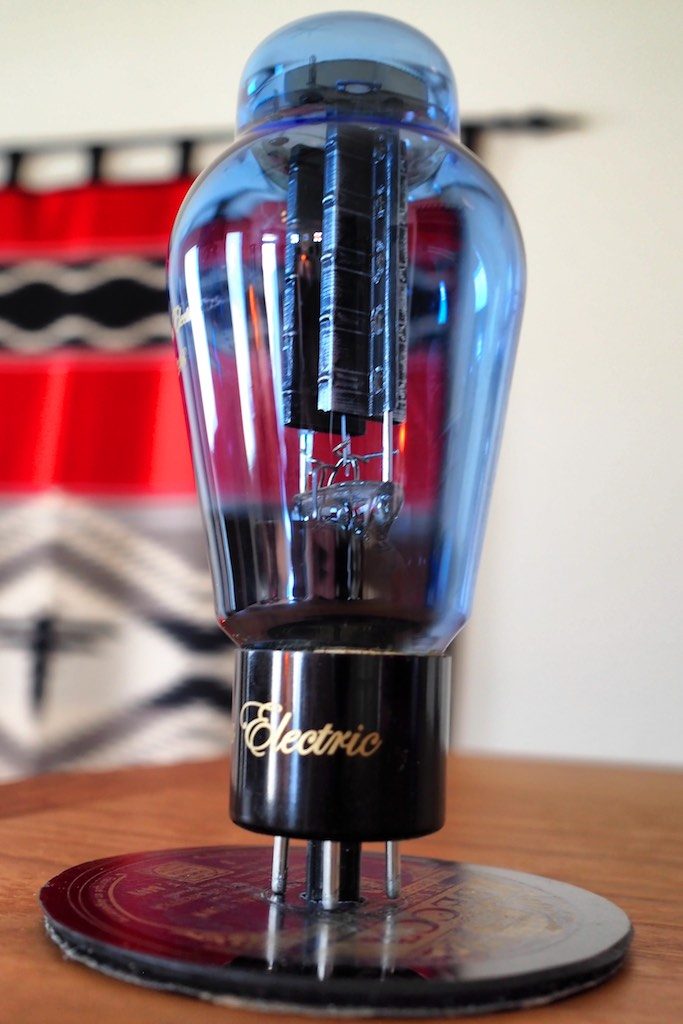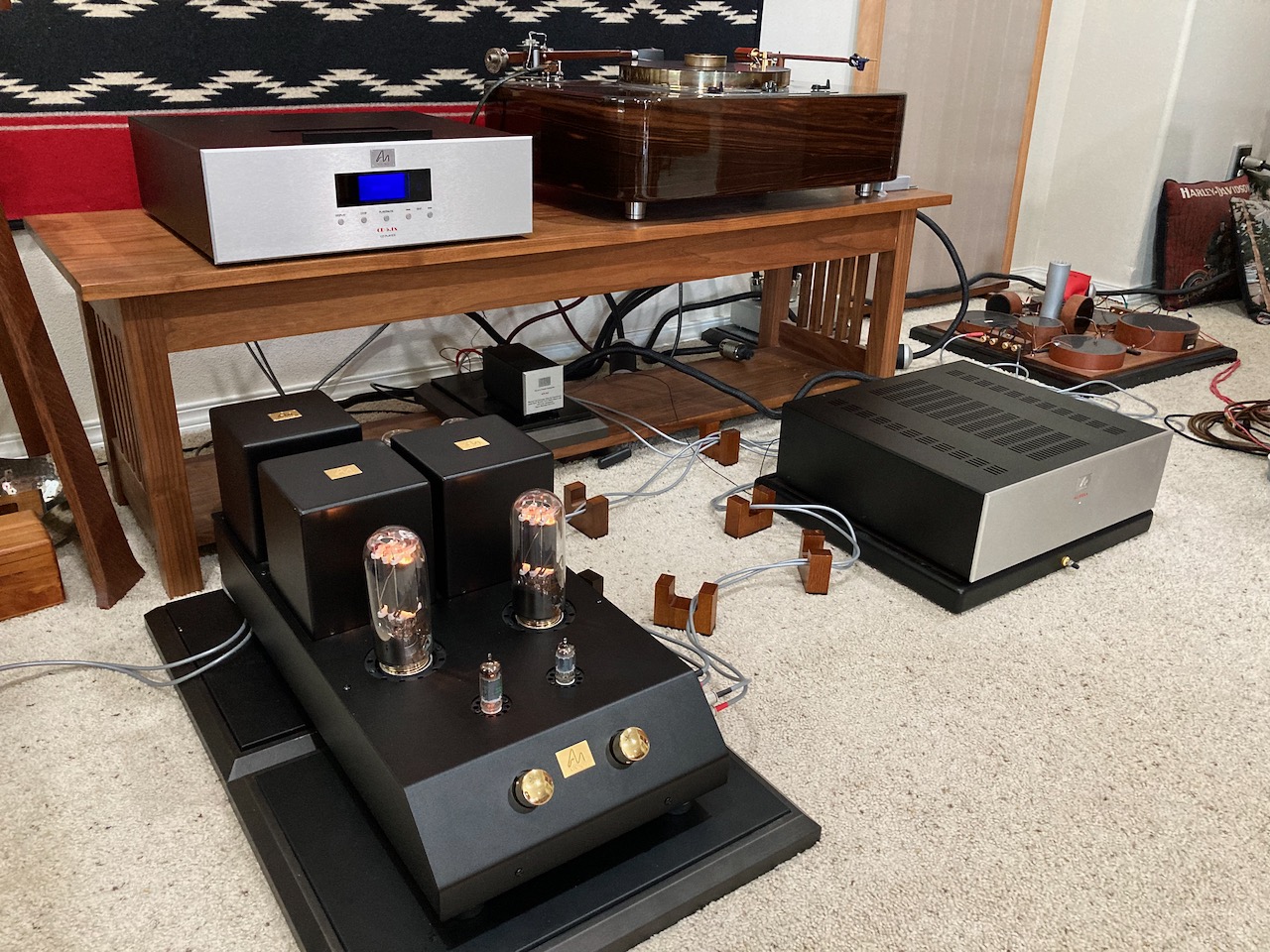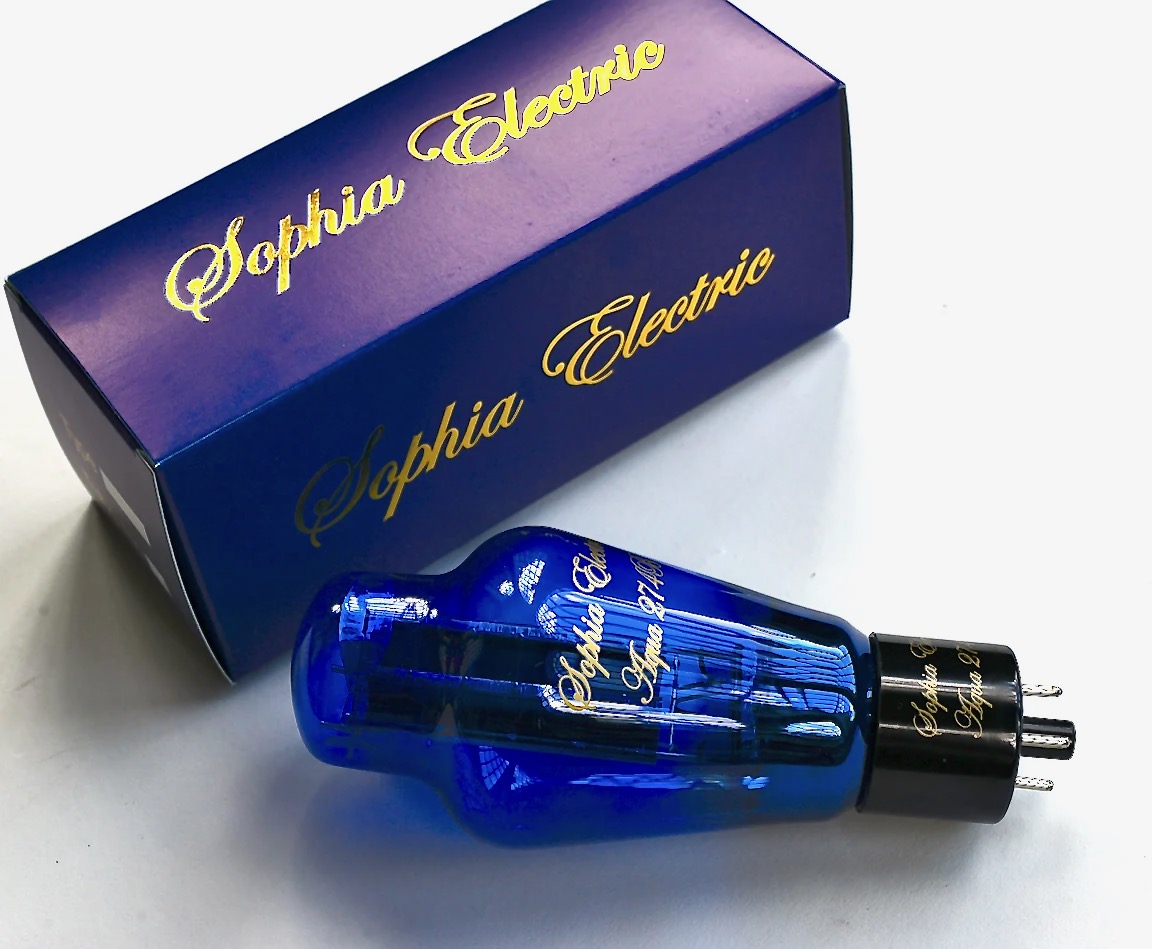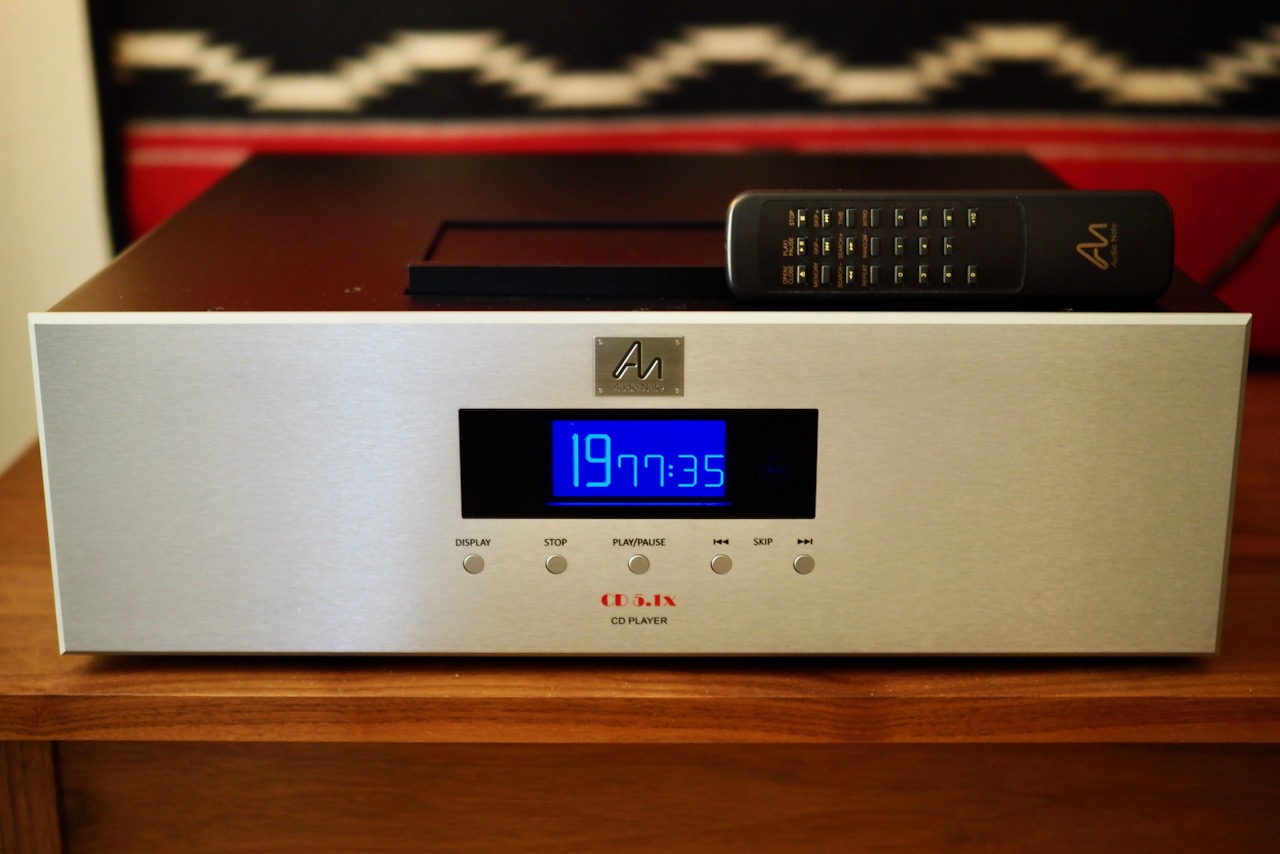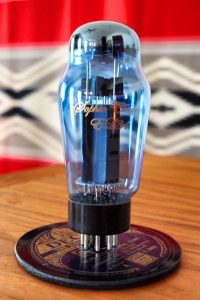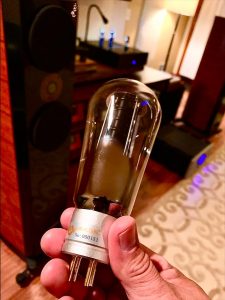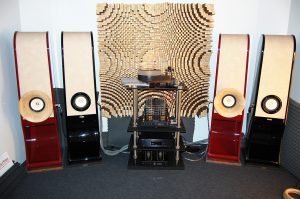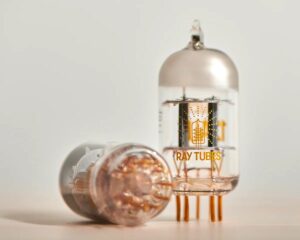I've always enjoyed visiting with Richard and Sue at Sophia Electric about their vacuum tubes and amplifiers, so when Dr. David contacted me about Sue's inquiry to see if I'd be interested in writing about the new Sophia Electric EL34-ST and Aqua 274B vacuum tubes, I said, "You bet!"
I'll start with the new Sophia Electric EL34-ST, but before I go into any details about it, I think I should begin with a little preliminary history about the EL34 style of vacuum tube, so that Richard's goals for the Sophia Electric EL34-ST can be understood in context.
Beam power tetrode tubes like the RCA 6L6 (1936) were popular in the vacuum tube marketplace in the 1940s. The European EL34 pentode vacuum tube developed by Philips in 1949, which was the parent company of Mullard, and Mullard would release their EL34 in 1953.
It has been speculated that the development of the EL34 was a way to circumvent the patents held by America's RCA on beam power tubes. Although, it has also been reported that RCA developed the 6L6 beam tetrode tube as a way to circumvent the even earlier Philips patent for the pentode tube design, which indicates intense corporate competition for a valuable vacuum tube market.
While there are differences in the internal construction of a 6L6 beam tetrode and an EL34 power pentode, they are functionally similar, and have a similar range of power output, but distinctly different tone, which has come to be characterized as "American tone" vs. "British tone".
Public domain photograph courtesy of Wikimedia Commons.
The intent of the Mullard EL34 was to produce an inexpensive tube that could achieve high power with high-sensitivity, allowing designers to develop amplification with a minimum of components to help keep costs down.
Mullard assisted designers by providing a wealth of information about incorporating their vacuum tubes into audio preamplifier and power amplifier designs in the Mullard Circuits for Audio Amplifiers (1959), which is fascinating to read, by the way.
The EL34 was rapidly embraced in for both audio and guitar amplifiers, with notable audio designs employing the EL34 like the Marantz Model 2, Model 5, Model 8A, Model 8B, and Model 9 amplifiers, and the very popular Dynaco Stereo 70. The EL34 was introduced into the guitar world when Marshall introduced it into their production guitar amplifiers, like the JTM 50 (1966) and JTM 45 (1967).
For those of you interested in learning more about EL34 vacuum tube history, I recommend you take a look at the Mullard Circuits for Audio Amplifiers, and in particular I encourage you to read Eric Barbour's two excellent articles about the history of the EL34 vacuum tubes in Vacuum Tube Valley Issue 2 and Issue 16.
The Sophia Electric EL34-ST Vacuum Tube
I asked Richard if he'd tell me about how his Sophia Electric EL34-ST compared to the classic EL34, and what he's done different.
"The origins of EL34 tubes can be traced back to Europe during the late vacuum tube era. Its creation was to fulfill the purpose of being easily mass produced during a time when cost cutting was important, and this resulted in many limitations being placed on the tubes."
"The EL34 tube is important, because with the resurgence of vacuum tubes in the 1990s, the EL34 tubes also regained worldwide popularity in thanks to its low drive voltage requirement that was sufficient for 20-35 watts per channel of power output for home use."
"Eastern European, Russian, and Chinese vacuum tube manufacturers have all taken the original European EL34 as the basis for their designs, and have replicated it in massive production without pondering the "whys" and "hows" of that original design."
"The EL34 design is an industrial tube, using a straight glass pipe sliced into cylinders on the assembly line for fast production. The shape of the tube, known as GT shape, was never considered for its sound quality. In other words, by making the EL34 tubes the same way they were originally created, the quality of the sound is sacrificed for the sake of time and profit."
"We think of Sophia Electric as an innovative American company, and thus we aim to redesign well known products like the classic EL34 design, to improve especially upon the sound quality. In the process of designing our high-performance 126S amplifier, we rediscovered the use of EL34 tubes for replacing the Western Electric 350B/6L6 in the classic WE 124 amplifier circuit that we started with. But we really wanted high-quality tubes to pair with our new amplifier, so we decided it was vital to redesign a brand new EL34 tube to create the ultimate in sonic performance for our new 126S amplifier."
"The original EL34 tube is a pentode power tube design that is known for bright, direct, and somewhat straight-in-your-face sound. When the EL34 tube is pushed too hard it generates an excessive amount of distortion, which is good for rock & roll guitar amplifiers, but not for high-end audio amplifiers."
"So we designed our new EL34-ST to be closer to the European KT66 family of tubes, yet we still wanted to retain the key characteristics of the original EL34 tube design. Our new design replaces the original EL34's plain and rather uncivilized sound with a more refined and artistic sound. The EL34-ST is articulate, yet still lyrical. It has more micro-contrast in the nuance of the music, and more vividness in the 3-D stereo soundstage that audiophiles enjoy."
"Electrically the specifications of the EL34-ST are same as the vintage Mullard, with a heater (filament) voltage of 6.3V AC, a heater current of 1.5A, a maximum plate voltage of 800V, and a maximum power dissipation of 25 watts."
"As a result, Sophia Electric's new EL34-ST tube is a direct replacement for vintage Telefunken and vintage British made Mullard EL34 tubes. It is also a safe direct replacement and premium upgrade choice for amplifiers currently outfitted with Chinese, Russian (the current "Mullard" is a Russian tube), and other Eastern European EL34 tubes."
"The vintage EL34's utilized a GT shape glass enclosure that was cheap and simple to mass produce. In the production line, each glass tube was created like a long sausage being sliced."
"For the Sophia Electric EL34-ST we chose to use an ST shaped glass bottle similar to those used for 300B's, which helps give the EL34-ST a 300B-esque sound. In fact, we applied much of our 300B design and manufacturing expertise in the creation of our new EL34-ST vacuum tube. The larger ST bottle shape gives our EL34-ST tubes a sound that is more airy and live-like compared to the cheap GT glass tube."
"The blue tint that we've added to the glass not only looks exotic, but during the voicing process we found that the blue tint of the ST shaped enclosure added more sonic impact to the presentation of the music. Vintage US military tubes often had a black metal base and/or black-grayish smoky carbon-containing paint sprayed on the inside of the glass tubes for light shielding to reduce noise. British and German military tubes often used red paint for light shielding to reduce noise. We have auditioned various light shielding possibilities, and ultimately settled on the blue tinted glass, which when combined with ST bottle shape, provided additional musicality and a distinctly better tone."
"Back when all vacuum tubes were placed inside a chassis, there was no need for consideration about light induced noise. However, high-performance audio enthusiasts now like to see the tubes displayed in the open, so they can see them from their listening seats, and they also enjoy seeing the glow of the filaments. The blue tint ST bottle shape is an ideal solution, as it is a beautiful and excellent sounding bottle shape, and the blue tint offers the benefit of a reduction in light induced noise, while still allowing the listener to see the beautiful glow of the filaments."
"We are confident that those who have an EL34 amplifiers would be thrilled with this brand-new patented Sophia Electric EL34-ST tube."
Sophia Electric offers the following pricing options for the Sophia Electric EL34-ST tubes:
- Grade A (top 10%): $125 USD per tube with 30 days warranty, $25 extra for one year warranty.
- Grade B (top 25%): $100 USD per tube with 30 days warranty, $25 extra for one year warranty.
As points of comparison, a matched pair of vintage EL34 Mullard nickel base tubes with an early production 1956 date code (the most desirable vintage Mullard EL34), sell for $499 USD per matched pair at Brent Jesse Recording (when available), and the new production "Mullard" (the name and trademark were acquired by New Sensor Corporation) that are manufactured in the Reflektor factory in Russia, typically sell for around $26 USD per tube.
So, the vintage 1956 Mullard EL34 at about $250 USD per tube, is about ten times more expensive than the mass production Russian Reflektor EL34 at $26 USD per tube, the new Sophia Electric EL34-ST at $125 USD per tube is about five times more expensive than the mass produced Russian Reflektor EL34 per tube, putting the Sophia Electric EL34-ST towards the middle of the pricing spectrum between current production Russian Reflektor EL34's and the vintage 1956 Mullard EL34's.
Sophia Electric told me that the Sophia Electric EL34-ST tubes are rated to have a mean life span of 7,000 hours, with a range of 5,000 – 10,000 hours, which translates to about a four to eight-year lifespan, with a median of just under a six-year lifespan, assuming about 1,200 hours per year of operation.
The Sophia Electric Aqua 274B Rectifier Tube
The original 274B rectifier tube was developed by the legendary Western Electric company in America. The Western Electric 274B is filamentary full-wave rectifier with an octal base that delivers direct current from an alternating current source. You can read the full specifications of the WE274B here, in the Western Electric Vacuum Tube Data Manual (1941).
I asked Richard if he would tell us about his Sophia Electric Aqua 274B rectifier tube, and how it compares to the original Western Electric 274B rectifier tube.
"Prior to Aqua 274B rectifier tube, Sophia Electric has made a number of successful 274B rectifier tubes, like the Princess 274B mesh plate, which we consider "the ultimate choice" for today's high-end tube pre-amplifiers and headphone amplifiers, as well as for small triode (2A3/45/PX4/71A/205D/101D) tube mono-block amplifiers."
"Our Princess 274B rigid plate rectifier tube is a true replica of the vintage Western Electric 274B rectifier tube. Many audiophile users have reported that it sounds better than the original vintage Western Electric 274B in the WE91 300B circuit, or in a modern 300B single-ended tube amplifier circuit, and at a fraction of the cost."
"However, all traditional 274B rectifier designs (Sophia or Western Electric) have the limitation that the first capacitor in the power supply after the rectifier tube must be miniscule. For vintage Western Electric 274B rectifier tubes it can be no bigger than 4 uF, and for the Sophia Electric rigid plate and mesh plate 274B's the limit is a slightly higher 8 uF. No matter how great those 274B tubes sound, this capacitor requirement limits 274B applications, just as it did for the original Western Electric 274B rectifier during the golden age of vintage vacuum tubes. Mainstream rectifier tubes like the 5U4 (America) and 5AR4 (Europe) permit up to 47 uF in the first capacitor position in a power supply, making them applicable to a wider variety of power supply designs."
"So why bother with a 274B rectifier? Back in the early 1930's Western Electric designed the WE91 cinema amplifiers that utilized the 300B tube in a single ended output circuit. The WE91 produced an output of 5.6W, which was enough to drive the cinema horn loudspeakers of the 1930's to volume levels adequate for cinema sound reproduction. 300B tubes require about 60V RMS drive voltage to achieve their full output power of 5.6W. To accomplish this, Western Electric chose the 310A, a pentode tube, for their driver choice."
"The pentode driver tube was an elegant choice, but it was at the expense of high frequency extension. Back then, 10KHz was considered the maximum high-frequency for high-fidelity, with movie dialog being more in the mid-range. Even so, Western Electric still wished for a little more high-frequency extension in their WE91 300B amplifier to make the sound more open and lively. This demand called for a premium long plate rectifier tube, now known as the WE 274B tube."
"Without the 274B rectifier tubes, Western Electric tube amplifiers sounded rather dark and dull. But with the 274B, Western Electric amplifiers sounded full and complete, and were a significant sonic upgrade."
"However, when the power supply capacitor is higher than 8 uF the long plate of the WE274B sparks, which forced Western Electric to limit the design requirement to 4 uF. This limitation prevented the 274B rectifier tubes from being used in a wide variety of applications, both in vintage times and today, as most modern equipment was designed with up to 47 uF capacitors as the first capacitor in the power supply so they could utilize 5U4G and 5AR4 rectifiers."
"Sophia Electric has solved this limitation of the 274B in our Aqua 274B rectifier tube. Initially we tried to solve this limitation by using exotic materials, as in the design of our very popular Royal Princess 300B tubes, which utilizes platinum and rare earth materials. We were successful, but the finished product was way too expensive for the average consumer to be viable."
"Then we went back to the WE 274B structure design as a starting point, and in an unexpected way we figured out a way to solve the Western Electric limitation of 4uF. This solution allowed us to build the Sophia Electric Aqua 274B, which can use up to a 47 uF filter capacitor value, the same maximum value permitted for 5U4 and 5AR4 rectifiers."
"In a 300B mono-block amplifier, such as Sophia Electric's 91-01, or the newer 91-01 Signature amplifier, the Aqua 274B can easily replace the 5U4 rectifier tube and deliver a wider and deeper soundstage, and deliver the musical magic that is otherwise missing when not using a 274B rectifier."
Sophia Electric offers the following pricing options for their Sophia Electric Aqua 274B rectifier tubes:
- Option 1: $199.99 per tube with one year warranty
- Option 2: $159.99 per tube with 30 days warranty
As interesting data points, original vintage Western Electric 274B rectifiers are currently selling for $1499 USD each at Brent Jesse Recording, and the mass production Chinese Shuguang 274B rectifier sells for approximately $27 USD each on the open market.
So, a vintage Western Electric 274B rectifier sells for approximately fifty-five times the price of a mass production Chinese Shuguang 274B rectifier, and the Sophia Electric Aqua 274B rectifier sells for about six times the price of the Shuguang 274B rectifier.
Sophia Electric doesn't have a lot of data on the lifespan of the Aqua 274B yet, as it is a new tube for them. However, based on earlier 274B rectifier track records, Sue thought it likely that it would have a 5,000 to 10,000-hour lifespan, with the caveat that the amplifier has no more than a 47 uF capacitor in the power supply after the rectifier.
If you are unsure about the value of the first capacitor in your amplifier's power supply, ask the manufacturer about it. For example, in my vintage McIntosh MC30 monaural amplifiers, in which I've hot-rodded the power supply a bit in an adventure with Yazaki-san, the first capacitor (capacitor plus bypass capacitor) after the rectifier is a 40.47 uF.
Listening Impressions: The Sophia Electric EL34-ST Vacuum Tube
I used my audio-visual system to review the Sophia Electric EL34-ST vacuum tubes.
I'm a vintage loudspeaker enthusiast, and for years I've wanted a pair of the legendary Altec A5 Voice of the Theatre loudspeakers of my own.
The A5's were first produced in 1945 for sound reinforcement in movie theaters, then were made famous among hi-fi enthusiasts through Jean Hiraga's L´Audiophile demonstrations in Paris, proving that the big and ungainly professional Altec A5 movie theater loudspeakers could be suitably tamed for high-fidelity home use.
My Altec A5 loudspeakers are composed of two Altec 825B cabinets, two Altec 515B Alnico low-frequency drivers, two Altec 1005B ten-cell horns, and two Altec 288C Alnico high-frequency compression drivers, a classic Altec-Lansing A5 Voice of the Theatre combination of components, restored by Gary Fischer (Gary Fischer Speakers).
My Altec A5's crossovers are highly modified versions of a Jean Hiraga crossover designed for the A5, which you can read more about here.
Normally I use my Leben RS100 line stage and my vintage McIntosh MC225 power amplifier with my Altec A5's, but given the MC225 doesn't allow for the use of EL34 tubes, I instead used my Leben CS-600 integrated amplifier that I normally use with my Harbeth Super HL5 loudspeakers for gathering listening impressions of the Sophia Electric EL34-ST tubes.
Besides being a beautiful and great sounding integrated amplifier, the Leben CS-600 is very versatile when it comes to vacuum tubes, and by setting switches internally the listener can select the appropriate cathode resistors and plate voltage for a wide variety of vacuum tubes.
With a quad of the Sophia Electric EL34-ST vacuum tubes in my Leben CS-600 integrated amplifier it puts out 28 watts per channel, which is not a lot of power in modern terms, but more than enough to drive the 100+ dB sensitivity of my vintage Altec A5's to deafening levels. Old Altec literature says that's enough power for the A5's to fill an 1800 seat movie theater with live-like sound pressure levels!
For a source, I used an OPPO UDP-203 Ultra HD Blu-ray disc player, and my television is an aging 42-inch Philips 1080P LCD television.
I used the superb Acoustic Revive Power Reference TripleC NCF power cords (reviewed here) for AC power cords for the Leben and OPPO.
The Acoustic Revive Power Reference TripleC NCF AC power cords were connected to an Acoustic Revive RPT-4 Ultimate power distributor, which in turn was connected to my AC outlet with an Acoustic Revive Power Reference AC power cord.
My Altec A5 Voice of the Theatre loudspeakers are wired internally with vintage Western Electric WE16GA tinned-copper cable, and are connected to the Leben CS-600 integrated amplifier with Duelund DCA16GA tinned-copper speaker cables.
For interconnects, I've been using either Duelund DCA16GA interconnects, Duelund DCA26GA interconnects, or Belden 8402 microphone cable interconnects.
I use one Acoustic Revive RR-777 Schumann generator for room conditioning.
I've tried a lot of tubes in my Leben CS-600 integrated amplifier over the many years that I have owned it, including the KT66, KT88, EL34, KT77, 6L6G, 5881, 6n3cE, 350B, 6550, and KT90.
Three of my favorites have been the Valve Art 350B (no longer available), the vintage Russian 6P3S-E (6n3cE) that Jim McShane told me about (above, no longer available), and the Electro-Harmonix KT90EH (below, about $50 USD each) which I learned about from my friend Ron Barbee.
The Valve Art 350B was articulate and natural sounding in my Leben, but proved very unreliable. The vintage Russian 6P3S-E is an articulate, nuanced, and neutral sounding vacuum tube in my Leben, and has been extremely reliable, and I like it a lot. The Electro-Harmonix KT90EH was big, warm, lush, and very musical in my Leben, and I liked it a lot, but it also proved unreliable.
For this article, I'll describe what I hear from the Sophia Electric EL34-ST in my Leben CS-600, and I'll offer some impressions about how it compares to the highly regarded SED Winged "C" EL34 ($60 USD each) that I bought back when doing a little tube rolling adventure with the Leben CS-600.
Right after I received the set of four EL34-ST tubes from Richard and Sue in March 2017, I installed them in my Leben CS-600 integrated amplifier, and have been listening to them with my Altec A5 Voice of the Theatre loudspeakers in my video system since then.
The Sophia Electric EL34-ST tubes have been completely reliable, and with their sexy blue glass ST bottles they are certainly the most beautiful vacuum tubes to look at that have ever graced my Leben CS-600 integrated amplifier.
It took a while for the Sophia Electric EL34-ST to settle in and sound their best, about 50 hours, if I remember correctly. The EL34-ST sounded good initially, but a very slightly lean and glassy, but they've improved steadily over time, and they're just gorgeous sounding in my Leben CS-600 now with some time on them.
If you haven't yet watched American Epic on PBS, you've got a real treat waiting for you!
Photograph of Jeff's 42-inch Philips 1080P LCD television screen.
T Bone Burnett, Robert Redford and Jack White teamed up as executive producers to create an amazing and inspiring series of shows on how music was recorded in the "Roaring Twenties" of 1920s America, and the dramatic influence the resulting phonograph records of musicians like the Carter Family, Mamie Smith, Fiddlin' John Carson, Louis Armstrong, and many others, had on American culture.
Photograph of Jeff's 42-inch Philips 1080P LCD television screen.
In American Epic, you get to experience contemporary artists like Jerron "Blind Boy" Paxton, NAA, Elton John, Jack White, Steve Martin, Willie Nelson, Merle Haggard, Los Lobos, Beck, Pokey LaFarge, Taj Mahal, Stephen Stills, and many others playing early American music recorded on the only surviving example of a 1920s Western Electric electrical recording system that represents the beginning of the modern recording era, which was restored by super engineer Nick Bergh over a ten-year period.
I was so blown away by watching the American Epic sessions on PBS, that I immediately purchased the American Epic Blu-ray version.
All of the musical performances on the American Epic sessions were taken directly from the wax disc recordings of the restored Western Electric electrical recording system with "no editing or enhancements", and they are phenomenal!
I thought it would be fun to use selections from the musical performances on the Blu-ray disc set for describing the performance of the Sophia Electric EL34-ST (and other) vacuum tubes in the Leben CS-600.
The tough part is that there are so many incredible songs on the American Epic sessions that it's hard to narrow it down to just a few songs for the review!
Photograph of Jeff's 42-inch Philips 1080P LCD television screen.
"Matrimonial Intentions" (above) with Jack White (vocals and guitar), Carla Azar (drums), Dominic Davis (upright bass), Fats Kaplin (mandolin), and Lille May Rische (vocals and fiddle) is great music that is fun to listen to, and the Sophia Electric EL34-ST made it sound fantastic and exciting, conveying the string tone of the fiddle extremely well, and portraying the fast tempo and bass line excellently.
Jack's and Lille May's voices were rich, resonant, and very emotive, and the interplay between the musicians during the session were electrifying (no pun intended)! Drum hits were dynamic and impactful, making the music riveting to listen to.
I was impressed with how superbly the Sophia Electric EL34-ST expressed the musicality of music and musicians, with tone, timbre, tempos, dynamics, harmonies, melodies, rhythms, and the exciting interplay of musicians playing music together as one, being so emotionally involving I found it truly hard to put into words.
Photograph of Jeff's 42-inch Philips 1080P LCD television screen.
NAS (above) sang the Memphis Jug Band's "On the Road Again" (1928), with Lille Mae Rische (fiddle), Dominic Davis (upright bass), Jake Falkner (jug), Jack White (guitar), Alfredo Ortiz (drums), and Fats Kaplin (banjo) accompanying, and I was stunned by the level of emotion and impact their performance evoked in me.
The Sophia Electric EL34-ST presented the music making of this session with aplomb, and I was completely mesmerized by NAS as he sang "On the Road Again". The dynamics were superb, as were the timbre of all the instruments, and the way the beat was presented gave the desired visceral reaction making me want to get up and dance to the music!
I kept marveling at the extremely natural tone and timbre of the musicians and instruments, the incredible emotive effect that the Sophia's relayed from the music, and I really couldn't find anything to fault.
Photograph of Jeff's 42-inch Philips 1080P LCD television screen.
Elton John (piano and vocals) and Jack White (guitar and vocals) played "2 Fingers of Whiskey" (above). The lyrics were written just prior to the session by lyricist Bernie Taupin, and Elton John composed the music for it on the spot during the session—impressive!
The Sophia Electric EL34-ST provided gorgeous piano tone, with all kinds of richness, color, and nuance, and Elton's voice was penetrating and emotive. Jack White's electric guitar tone was superb, being colorful and dynamic, and very expressive.
As I watched and listened to the American Epic sessions, I was always impressed by how "right" everything sounded with the Sophia Electric EL34-ST. The tone, the timbre, the tempos, the beat, the melodies, the dynamics, everything just sound so naturally real and emotive it was very striking, making the music-making exciting, interesting, and mesmerizing to watch and hear.
It's a little difficult to talk about audiophile-style sonics with American Epic, as all the sessions were recorded to one microphone (mono) that everyone gathered around while playing music, and recorded direct to wax disc, so things like soundstage and imaging didn't really apply, but the recordings were spacious and luxurious sounding, with a level of resolution of nuance that was very satisfying, and the naturalness of the dynamics was simply superb, with the sonics having a sense of refinement and beauty to it that was truly impressive.
I put my matched quad of the highly regarded SED Winged "C" EL34 tubes ($60 USD each) into my Leben CS-600, and let it warm up adequately.
Then I played the American Epic sessions. I'm not going to mince words here, it'd just be a waste of time, as the Sophia Electric EL34-ST vacuum tubes outperformed my set of highly regarded SED Winged "C" EL34 vacuum tubes to such a large extent that it was embarrassing to hear.
The Winged "C" EL34 robbed the sessions of almost all of the emotional impact and exciting drama that the Sophia Electric EL34-ST infused into them, making the sessions sound harsh, distant, and boring in comparison.
Compared to the Sophia Electric EL34-ST the timbre of the Winged "C" EL34 sounded leaned out and unrefined, and their overall tone was wanting. The Winged "C" EL34's dynamics sounded compressed in comparison, making beat less pronounced and involving, and there was less dynamic nuance apparent, which robbed melodies of life in comparison to the EL34-ST. The Winged "C" EL34 vacuum tubes were also less resolving, and missed a lot of nuance and subtle textures that can make music so exciting to listen to.
The performance gulf between the Sophia Electric EL34-ST and Winged "C" EL34 was rather dramatic, and that is that. I couldn't wait to get the Winged "C" EL34 out of the Leben CS-600 and put the Sophia Electric EL34-ST back in.
The Sophia Electric EL34-ST are simply the finest vacuum tubes I've ever had the pleasure to experience in my Leben CS-600 integrated amplifier. They are remarkably musically satisfying, full of emotional impact and excitement, are very refined and articulate, tonally gorgeous, with an effortlessly beautiful and satisfying overall presentation that allowed me to get caught up in the music and forget about everything else.
The Sophia Electric EL34-ST are expensive compared to Winged "C" EL34, but in the case of the Sophia Electric EL34-ST you definitely get what you pay for.
I really don't have enough superlatives to describe how impressively the Sophia Electric EL34-ST performed in my Leben CS-600 when playing the American Epic sessions, they are truly sexy blue bottles full of musical magic!
Highly recommended!
Listening Impressions: The Sophia Electric Aqua 274B Rectifier Tube
I used my primary music listening system to gather listening impressions of the Sophia Electric Aqua 274B rectifier tube.
My loudspeakers are Tannoy Westminster Royal Special Edition's, rewired internally with vintage Western Electric WE16GA tinned-copper wire, with the internal crossovers bypassed in favor of custom external Duelund Coherent Audio CAST crossovers, which themselves are wired internally with the Duelund DCA series of tinned-copper cables.
I'm using restored & hot-rodded vintage McIntosh vacuum tube electronics for amplification. For line and phono amplification & equalization I'm using the McIntosh MX110Z tuner-preamplifier, and for power amplification I'm using monaural McIntosh MC30 amplifiers.
As I mentioned earlier, my vintage McIntosh MC30 monaural amplifiers, in which I've hot-rodded the power supply a bit, the first capacitor after the rectifier is a 0.47uF capacitor, which is well under the 47mF upper limit recommend by Sophia Electric.
My turntable is a highly hot-rodded Garrard 301 from Classic Turntable Company, the ‘Classic 301', installed into a plinth from Artisan Fidelity, and mounted with a Pete Riggle Audio Engineering "Woody SPU" tonearm & a Thomas Schick tonearm.
For most of the review period, I used my Woody SPU tonearm with my delightful Ortofon SPU Classic GM MkII stereo phono cartridge installed on it, which is stepped up into the MX110Z through a bespoke Intact Audio dual mono step-up transformer (SUT), which was designed to complement my Ortofon SPU Classic GM MkII.
While I was writing this article, I mounted an Audio MusiKraft hot-rodded and highly-tunable Denon DL-103 MC phonograph cartridge (below, in for review) on the Woody SPU tonearm, which is stepped-up with an Auditorium 23 step-up transformer designed specifically for the Denon DL-103.
For this article, my Thomas Schick tonearm was mounted with the superb Murasakino Musique Analogue "Sumile" MC phonograph cartridge (above) that I reviewed in Issue 92, and stepped-up through the equally superb Arai Lab MT-1 step-up transformer (below, review to come).
To connect the Intact Audio SUT or Auditorium 23 SUT to the MX110Z preamp I use shielded Duelund DCA16GA tinned-copper interconnects, to connect the MX110Z preamp to the MC30 monaural amplifiers I use unshielded Duelund DCA20GA tinned-copper interconnects, and to connect the MC30 monaural amplifiers to the Duelund CAST crossovers of the WRSE's, I use Duelund DCA12GA tinned-copper speaker cables. For the Sumile MC and Audio MusiKraft phono cartridges I alternated between Duelund DCA26GA tinned-copper headshell leads and Art of Tone 24GA headshell leads, until I got the overall sonic and musical balance dialed in exactly the way I wanted it.
All of my electronics are plugged into an Acoustic Revive RPT-6 Absolute NCF power distributor (above), which is connected to my wall outlet with an Acoustic Revive Power Reference TripleC NCF AC power cord (below, recently reviewed HERE).
My wall outlet (below) consists of an Acoustic Revive CB-1DB receptacle base plate, CFRP-1F carbon fiber outlet plate, and an Acoustic Revive modified Oyaide R-1 receptacle. This combination makes for an excellent sounding AC wall outlet, and provides a very solid & secure interface to plug the Power Reference TripleC NCF AC power cord into.
For accessories, I should mention the ever-present pair of Acoustic Revive RR77 & RR888 Schumann wave generators (below) that provide room/system/brain(!) conditioning.
I use Acoustic Revive RST-38 quartz under-boards under my Intact Audio SUT's and Acoustic Revive RPT-6 Absolute NCF power distributor, which by the way, were the inspiration for the integrated under-boards built into my Duelund CAST crossovers.
I also use Acoustic Revive RCI-3 cable insulators (lifts), and three studio-like Acoustic Revive RWL-3 acoustic conditioning panels that you can see demurely standing in the background on the front wall behind my Westminster's, and on the right side-wall.
Finally, I use the Acoustic Revive RPC-1 Power Supply Conditioner to condition the in-wall AC (above).
I've tried a number of different rectifiers in my MC30's, like the excellent British NOS Haltron 5U4G rectifiers (above), and the also excellent NOS RCA 5U4GB rectifiers (below), which have been my favorites until now.
I also have a pair of the aforementioned Shuguang Preferred Series 274B rectifiers (below) that I thought would make for a nice comparator for the Sophia Electric Aqua 274B rectifiers.
The Sophia Electric Aqua 274B rectifiers immediately impressed me upon first listen, and they easily bettered my excellent NOS Haltron 5U4G's, that I have been very happy with (until now).
The Sophia Electric Aqua 274B rectifiers (below) didn't need any additional run-in time after I got them, they sounded good immediately, with a gorgeous creamy tone, sparkling highs, saturated tone colors, and a vivid musicality that I found hard to resist.
Just for fun, I thought I'd pick "blue" music to match the Sophia Electric Aqua 274B rectifiers' sexy blue glass bottles.
First up is Cassandra Wilson's Blue Skies on JMT (1988), which the critics didn't adore because it departed from Cassandra's earlier style, and embraced a nice selection of old jazz standards instead. (above)
Nevertheless, I loved this album from the moment it was released, with Cassandra singing beautiful old jazz standards, accompanied by a proper jazz trio of Mulgrew Miller (piano), Lonnie Plaxico (bass), Terri Lyne Carrington (drums).
With the Sophia Electric Aqua 274B rectifiers casting their blue glow on the performances in Blue Skies, Cassandra's vocals came through as rich, natural, colorful, sexy, and very, very, emotionally expressive.
The Sophia Electric Aqua 274B rectifiers offer a lot of transparency and resolution of musical nuance, portraying Mulgrew Miller's piano with impressive tone color that was full of sparkle and beautifully bell-like resonant overtones, and an abundance of overtone nuance.
Lonnie Plaxico's bass lines were nicely resolved, with tempos clearly portrayed, and driving forward the music with a momentum that I really enjoyed.
Dynamics were superb, with melodies springing vividly to life, and bass drum hits being exciting and forceful. Cymbals shimmered with natural tone and presence.
I loved the combination of intense musicality, transparency, smoothness, and gorgeous tone that the Sophia Electric Aqua 274B rectifiers brought to Blue Skies.
Another beautiful blue album is The Alternate Blues (Pablo, 1980) showcasing the considerable talents of trumpeters Dizzy Gillespie, Freddie Hubbard, and Clark Terry, accompanied by the all-star quartet of Ray Brown (double bass), Bobby Durham (drums), Joe Pass (guitar), and Oscar Peterson (piano).
This is my go-to album for trumpet tone, and with the Sophia Electric Aqua 274B rectifiers it's as perfect as I've ever heard it. Utterly natural, vividly present, superbly dynamic, and full of gorgeous tone color and nuance.
The Sophia Electric Aqua 274B rectifiers offers superb sonics, resulting in a wide soundstage, imaging with a sense of vivid presence, easily discernable layers of depth for the images, and there is a billowing sense of acoustic space that fills my room seemingly without end.
While the focus of this album is trumpets, Ray Brown's double bass, Bobby Durham's drums, Joe Pass' guitar, and Oscar Peterson's piano sounded bloody gorgeous, with natural tone, live-like dynamics, superb portrayal of tempos, and highlighting the sophisticated interplay between the musician with lots of musically relevant nuance.
Switching away from jazz, I put on the American rock band Counting Crows' "Beautiful Blue Buildings" from their superb August and Everything After album, showcasing the superb songwriting talents and vocals of Adam Duritz.
There are too many talented musicians on August and Everything After to mention, playing a diverse variety of instruments from a Hammond B3 organ, harmonica, accordion, guitars, drums, pedal steel guitar, mandocello, mandolins, guitorgan, and various percussion, which together weave an astonishingly rich tapestry of very blue music that gives me big blue goosebumps every time I listen to it.
The Sophia Electric Aqua 274B rectifiers give the presentation of the music a smooth, rich, nuanced, tonally colorful, and timbrally complex tapestry of music that sounds astonishingly present and live-like in intensity.
Through the Sophia Electric Aqua 274B rectifiers, on "Beautiful Blue Buildings" Adam Duritz's vocals express achingly intense blue emotions about the meaninglessness and agonies of life, with beautiful and haunting accompaniment from the drums and a Hammond B3 signing like a ghost in the background.
The drums are impactful, the guitar playing articulate, the Hammond a haunting presence, and the presentation of "Beautiful Blue Buildings" is incredibly beautiful and moving through the glowing blue magic of Sophia Electric Aqua 274B rectifiers.
The sonics with Sophia Electric Aqua 274B rectifiers were superb, with a huge sense of space, vividly present images, a wide and deep soundstage, lots of resolution of musically meaningful nuance, and superb dynamics.
The Sophia Electric Aqua 274B rectifiers easily outperformed my British NOS Haltron 5U4G rectifiers and the also excellent NOS RCA 5U4GB rectifiers, making them sound lean, washed out tonally, bleached in tone color, and rather average, which they aren't!
The Sophia Electric Aqua 274B rectifiers are just so good that my other rectifiers paled in comparison, with Aqua 274B's being transparent, nuanced, smooth, colorful, natural, and dynamic presentation, that makes the music sound live, beautiful, and emotionally involving—they're something special!
Before I got too carried away, I thought I'd better go back and give the Shuguang Preferred Series 274B rectifiers (below) a try in an apples-to-apples sort of way, and see how they compared Sophia Electric Aqua 274B rectifiers.
The Shuguang Preferred Series 274B rectifiers actually sound pretty nice for their inexpensive price, but they're not even close to being in the same league as the Sophia Electric Aqua 274B rectifiers, lacking the latter's creamy richness, transparency, nuance, superb sonics, and intense musically.
The Shuguang Preferred Series 274B rectifiers sound a little harsh and edgy in comparison, with highs being a little too forward and brittle sounding, and the dynamics don't have the many gradations that I hear from the Sophia's.
A lot of the emotional connection is missing from the music with Shuguang Preferred Series 274B rectifiers, which the Sophia Electric Aqua 274B rectifiers so easily convey.
Well, I think you get the idea, you get what you pay for in this case, and you get a lot more for the extra cost of the Sophia Electric Aqua 274B rectifiers, both musically and sonically, and there's just no comparison between them and the Shuguang Preferred Series 274B rectifiers.
Summary and Conclusions
I'm noticing a pattern here with both the Sophia Electric Aqua 274B rectifiers and the Sophia Electric EL34-ST power tubes, they just obliterated every contender in my experience, it wasn't even close.
The Sophia Electric Aqua 274B rectifiers (below) and the Sophia Electric EL34-ST power tubes (above, below) were leaps and bounds better musically and sonically than anything I have experienced in my McIntosh MC30 monaural amplifiers, or my Leben CS-600 integrated amplifier, respectively.
I don't know if it's the ST bottle shape, or the noise reducing blue glass, the design & materials of their internal structure, or Richard's prowess in voicing tubes, but the Sophia Electric Aqua 274B rectifiers and the Sophia Electric EL34-ST power tubes are both home runs by Richard, and they are simply superb both musically and sonically.
I'd like to thank Richard and Sue for the opportunity to give their sexy new blue Sophia Electric Aqua 274B rectifiers and Sophia Electric EL34-ST power tubes a listen, it was fun and illuminating! Thank you!
You can visit the Sophia Electric website HERE for more information, or contact Richard and Sue HERE to make arrangements to purchase your own Sophia Electric Aqua 274B rectifiers and Sophia Electric EL34-ST power tubes.
As always, thanks for stopping by Positive Feedback to read my articles, and may the tone be with you!
All photographs by Jeff Day unless otherwise noted.




